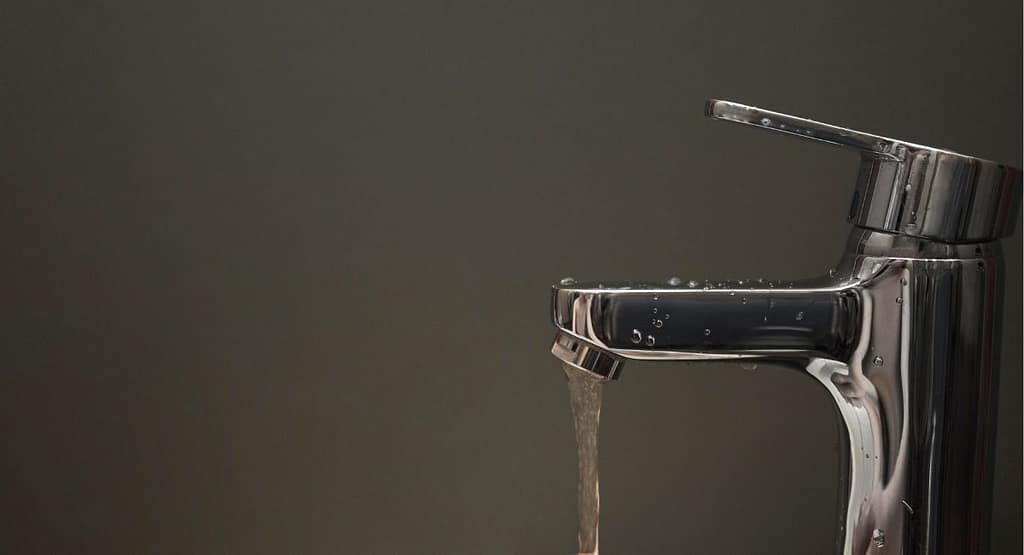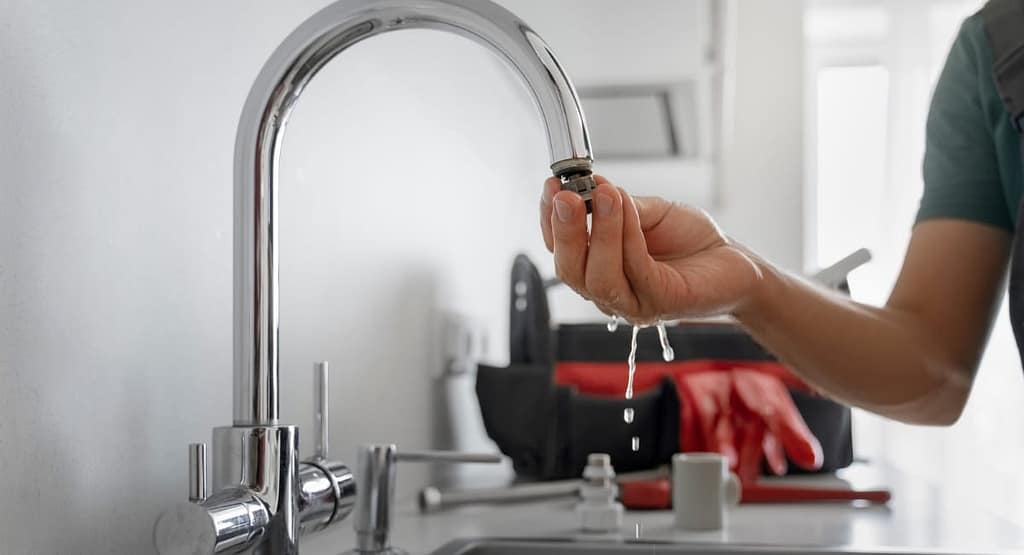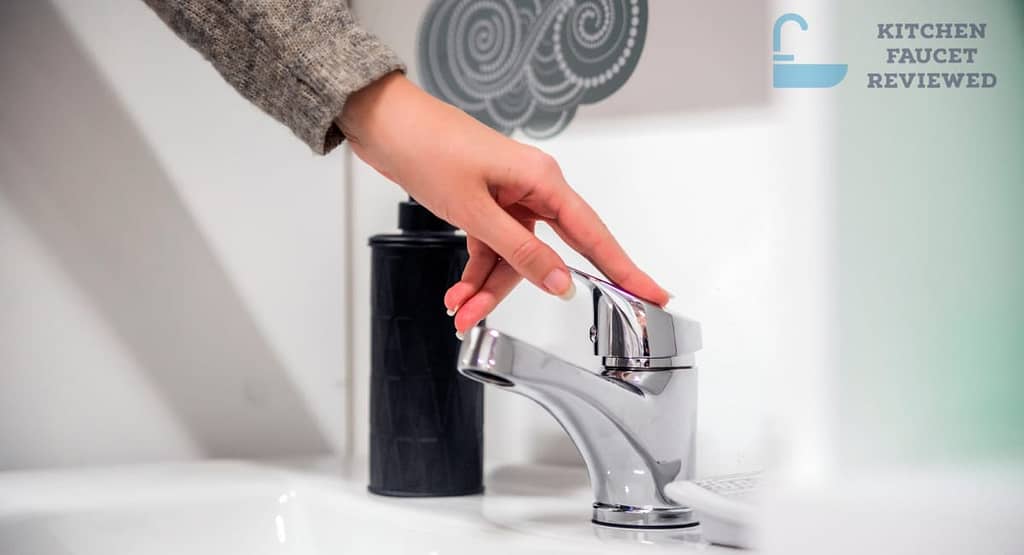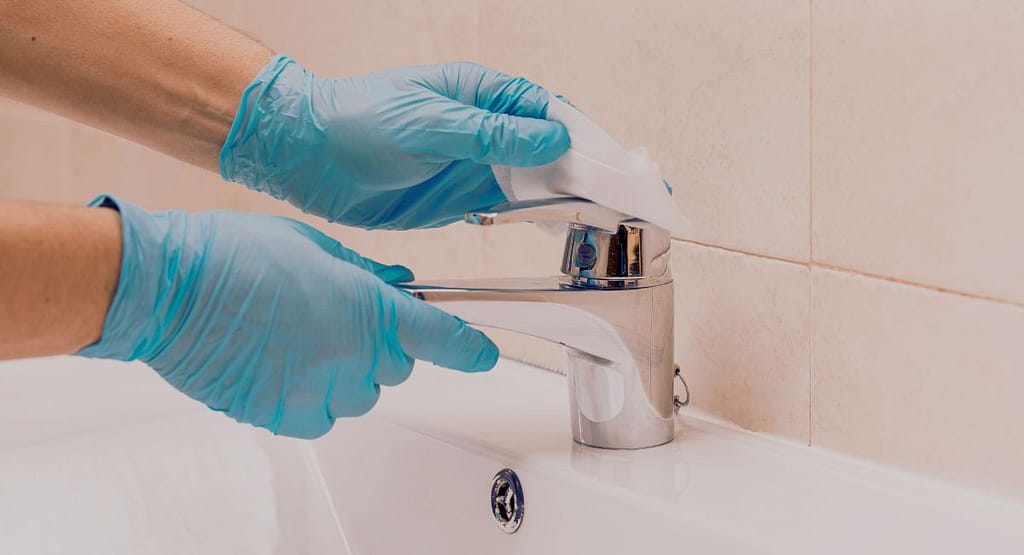When it comes to modern kitchen and bathroom faucets, there is an essential component that often goes unnoticed but plays a significant role in ensuring the functionality and aesthetics of the fixture – the deck plate.
In this comprehensive guide, we will delve into the world of what is deck plate in faucets, exploring their purpose, design variations, installation methods, and benefits. By the end of this blog post, you’ll have a profound understanding of this ingenious mechanism and its role in creating a seamless and efficient water delivery system.
What is a Deck Plate in faucets?
A deck plate, also known as an escutcheon plate, is a flat, metal or plastic piece that covers the extra holes in a sink or countertop that are not being used by the faucet or its handles. The primary purpose of the deck plate is to provide a visually appealing and neat solution when installing a single-hole faucet into a sink or countertop with multiple mounting holes. This clever innovation allows homeowners and designers to achieve a polished look while accommodating the use of a faucet designed for single-hole installation.
Design Variations
Deck plates come in various designs, shapes, and sizes, catering to different faucet styles and configurations. The most common shapes include round, square, and rectangular, each offering its own aesthetic appeal. Additionally, the materials used for deck plates vary from stainless steel, chrome, brushed nickel, brass, and even high-quality plastics. The choice of material not only affects the appearance but also influences the plate’s durability and resistance to corrosion and tarnishing.
How to Install Deck Plate in My Faucet?
1. Preparing the Sink or Countertop:
– If you are installing the faucet on a new sink or countertop, make sure to measure the distance between the mounting holes to ensure compatibility with the deck plate. Standard deck plates typically cover three holes, which are spaced 4 inches apart, but some may cover more holes or have adjustable configurations.
– Before cleaning the sink or countertop surface, take this opportunity to inspect the condition of the existing plumbing and water supply lines. Replace any worn-out or damaged components to prevent future leaks or issues.
2. Positioning the Deck Plate:
– It’s essential to align the deck plate properly to ensure a neat and professional-looking installation. Use a level to check that the plate is perfectly horizontal or adjust it accordingly. A misaligned deck plate can lead to water pooling around the faucet and make cleaning more challenging.
3. Securing the Faucet:
– When inserting the faucet and handles through the mounting holes, be gentle to avoid scratching the sink or countertop surface. Applying a bit of plumber’s putty or silicone sealant under the deck plate can provide a watertight seal and prevent water from seeping underneath.
– Hand-tighten the mounting hardware initially and then use a wrench to secure them further. Avoid over-tightening, as it can damage the faucet or the sink surface.
4. Tightening the Deck Plate:
– To ensure an even and secure fit, tighten the mounting nuts or fasteners in a cross-pattern. Start by tightening the nut at one end of the deck plate, then move diagonally to the nut on the opposite end. Continue this pattern until all nuts are tightened.
– Check again for levelness after securing the deck plate to guarantee it hasn’t shifted during the tightening process.
5. Connecting Water Supply Lines:
– Before connecting the water supply lines, it’s a good idea to flush the lines to remove any debris or sediment that might have accumulated. Place a bucket under the faucet, turn on the water supply for a few seconds, and then turn it off.
– Use flexible supply lines for an easier installation, especially if you are a DIY enthusiast. These lines are less likely to kink and can be more forgiving when making small adjustments to the faucet position.
– When attaching the supply lines, use Teflon tape on the threaded connections to ensure a watertight seal. This prevents leaks and maintains the integrity of the connections over time.
– After connecting the supply lines, open the water supply slowly and check for any leaks. Look closely around the deck plate, handles, and connections. If you notice any leaks, turn off the water supply and re-tighten the affected areas as needed.
By following these in-depth installation tips, you can ensure a successful faucet installation with a deck plate, providing an attractive and functional addition to your sink or countertop. Remember to always consult the manufacturer’s instructions and take necessary safety precautions when working with plumbing and water supply systems.
Benefits of Deck Plates
Deck plates, also known as escutcheons, offer various benefits beyond the ones mentioned above. Here are some additional advantages and unique knowledge about deck plates:
- Enhanced Hygiene and Easy Cleaning: Deck plates create a smooth surface around the base of the faucet, reducing the chances of dirt, grime, or food particles accumulating in the gaps between the faucet and the sink. This makes cleaning the area around the faucet easier and helps maintain better hygiene in the kitchen or bathroom.
- Leak Prevention: In addition to preventing water damage, deck plates can also help in leak prevention. They create a tight seal around the faucet base, minimizing the risk of water leaking through the gaps and reaching the underlying plumbing. This feature is particularly valuable in commercial settings where constant use of faucets can lead to wear and tear.
- Temperature Regulation: Some advanced deck plate models come with built-in temperature indicators that display the water temperature. This feature is beneficial, especially in commercial kitchens, as it allows users to determine the water temperature at a glance, reducing the risk of accidental scalding.
- Structural Support: In certain cases, especially with larger and heavier faucets, deck plates provide additional structural support to keep the faucet stable and secure. This feature is crucial in heavy-duty applications where the faucet is subjected to frequent and vigorous use.
- Customization and Personalization: Deck plates are available in various materials, finishes, and designs, allowing homeowners and designers to customize the appearance of the sink area according to their preferences. This level of personalization contributes to the overall aesthetics of the kitchen or bathroom.
- Noise Reduction: The installation of deck plates can help reduce the noise produced by the water flow. The plate acts as a dampening barrier between the faucet and the sink, minimizing the vibrations that cause noise during water usage.
- Compatibility with Retrofitting: In renovation or remodeling projects, deck plates offer the advantage of retrofitting new faucets into existing sink configurations with multiple mounting holes. This saves time, effort, and additional expenses that would otherwise be required to modify the sink or countertop to accommodate a different faucet configuration.
- Conservation of Resources: By covering unused mounting holes, deck plates help conserve resources by reducing the amount of caulk or sealant needed during installation. This, in turn, contributes to more sustainable building practices.
- Improved Resale Value: Upgrading the aesthetics and functionality of kitchen and bathroom fixtures, including the use of deck plates, can positively impact the resale value of a property. Prospective buyers are often drawn to well-designed, easy-to-maintain spaces, making deck plates a small yet valuable investment in the long run.
Conclusion
Deck plates are the unsung heroes of faucet installations, offering both aesthetic appeal and practical functionality. Whether you’re upgrading your kitchen or bathroom faucets, or simply looking to achieve a sleek look in your space, the deck plate is a small but essential component that makes a significant impact. The next time you admire the beauty of a single-hole faucet mounted seamlessly on a multi-hole sink, remember the ingenuity of the deck plate that made it all possible.
Frequently Asked Questions
1. What is a deck plate in relation to faucets?
A deck plate, also known as an escutcheon plate, is a flat, metal or plastic component that covers the extra mounting holes in a sink or countertop when installing a single-hole faucet. It provides a visually appealing and neat solution, allowing single-hole faucets to be installed in sinks or countertops with multiple mounting holes.
2. Why do I need a deck plate for my faucet installation?
If you have a single-hole faucet and your sink or countertop has multiple mounting holes, a deck plate is essential to achieve a polished and cohesive appearance. It covers the unused holes, preventing water from seeping underneath and offering a neat and visually pleasing finish to your faucet installation.
3. Are deck plates necessary for all faucet installations?
No, deck plates are not required for all faucet installations. They are specifically designed for single-hole faucets that need to be installed in sinks or countertops with extra mounting holes. If your faucet matches the number of holes in your sink or countertop, you won’t need a deck plate.
4. What types of materials are deck plates made from?
Deck plates are commonly made from various materials such as stainless steel, chrome, brushed nickel, brass, and high-quality plastics. The material choice not only affects the appearance but also influences the plate’s durability and resistance to corrosion and tarnishing.
6. Can I use a deck plate with any faucet model?
Deck plates are generally compatible with most single-hole faucet models. However, it’s essential to check the specifications and dimensions of the deck plate to ensure it fits your faucet and mounting hole configuration correctly.
8. Can I use a deck plate with a vessel sink?
Using a deck plate with a vessel sink is generally not recommended, as vessel sinks are typically designed for single-hole faucets. Installing a deck plate may disrupt the aesthetic appeal of the vessel sink and faucet combination.
9. How do I clean and maintain my deck plate?
To clean your deck plate, use a mild soap or dishwashing liquid mixed with warm water and a soft cloth. Avoid using abrasive cleaners or scrub brushes that may damage the finish. For metal deck plates, you can use specific metal cleaners to maintain their shine and luster.
10. Can I retrofit a deck plate to my existing faucet installation?
If you have a single-hole faucet installed and later decide to cover additional mounting holes, you can retrofit a deck plate to achieve a more polished look. Just ensure that the deck plate matches the faucet’s finish and covers all the unused holes properly.
11. Can I remove my faucet deck plate after installing it?
Yes, in most cases, you can remove the deck plate from a faucet after installing it. The deck plate, also known as an escutcheon plate, is typically used to cover the extra mounting holes in the sink or countertop when installing a single-hole faucet. If you decide to remove the deck plate later on, there are a few things you should consider:
1. Faucet Configuration: Check the configuration of your faucet. Some faucets are designed to be used with a deck plate, while others can be installed as single-hole faucets without the plate. If your faucet is specifically designed to be used with a deck plate, removing it may not be ideal, as it could leave visible holes in the sink or countertop.
2. Additional Holes: If you initially had extra mounting holes in your sink or countertop, removing the deck plate may expose these holes. You’ll need to find a way to cover or fill them to maintain a neat appearance and prevent any potential water leakage.
3. Aesthetic Considerations: Removing the deck plate can change the overall look of the faucet installation. Some people prefer the clean and streamlined appearance of a single-hole faucet without the deck plate, while others like the added coverage provided by the plate.
4. Water Leakage: If you decide to remove the deck plate, make sure to check for any potential water leakage around the faucet base. Without the deck plate to cover the holes, water could find its way into the gaps and cause damage to the sink or countertop.
If you want to remove the deck plate and switch to a single-hole configuration, you’ll need to obtain a faucet that is designed for single-hole installations. Alternatively, if you prefer the aesthetics of a single-hole faucet but still have extra mounting holes, you can explore decorative hole covers or plugs that match your sink’s finish to cover the exposed holes.
Before making any changes, carefully consider the implications and consult a professional plumber if you are unsure about the best course of action for your specific situation.





